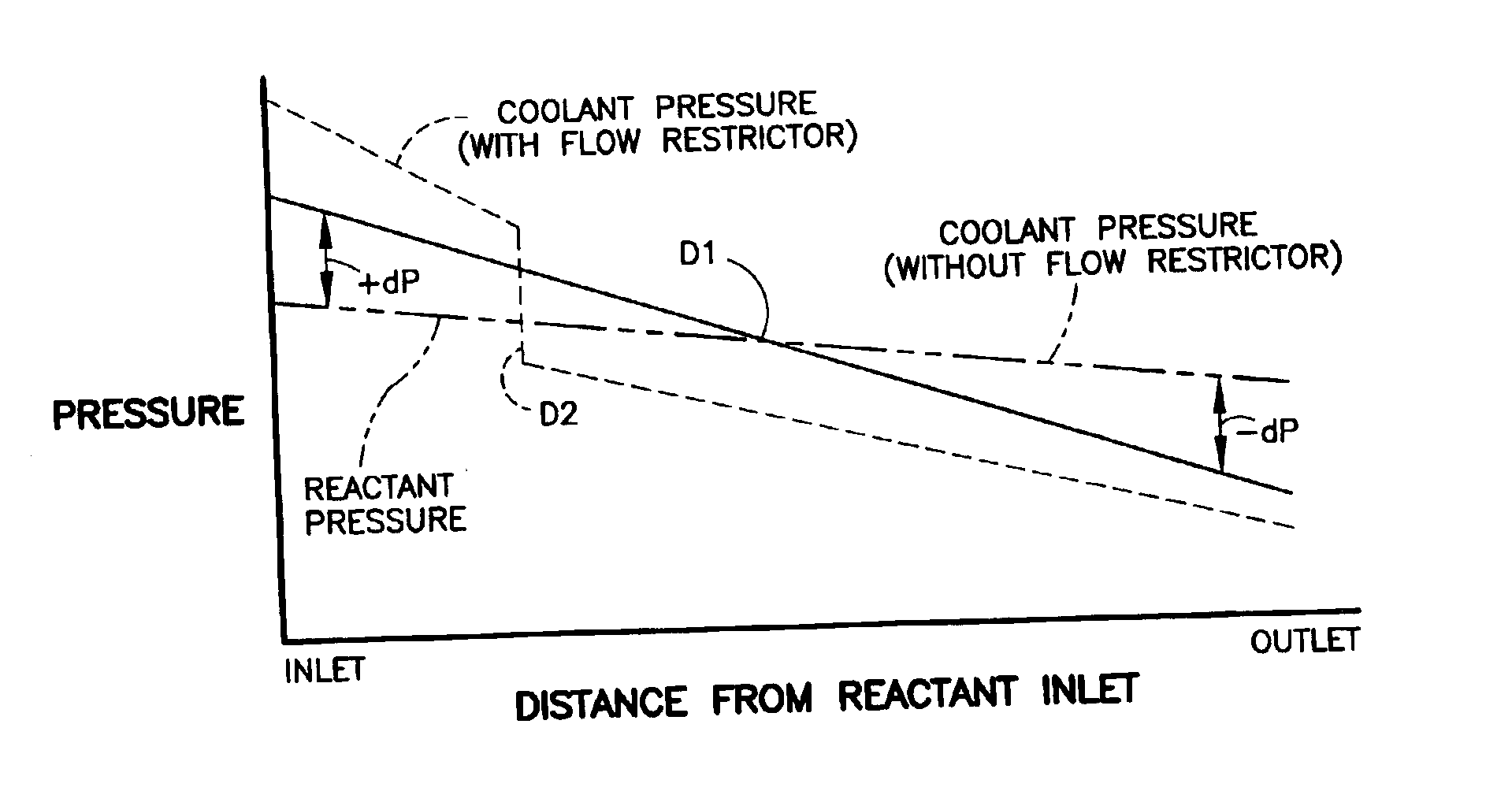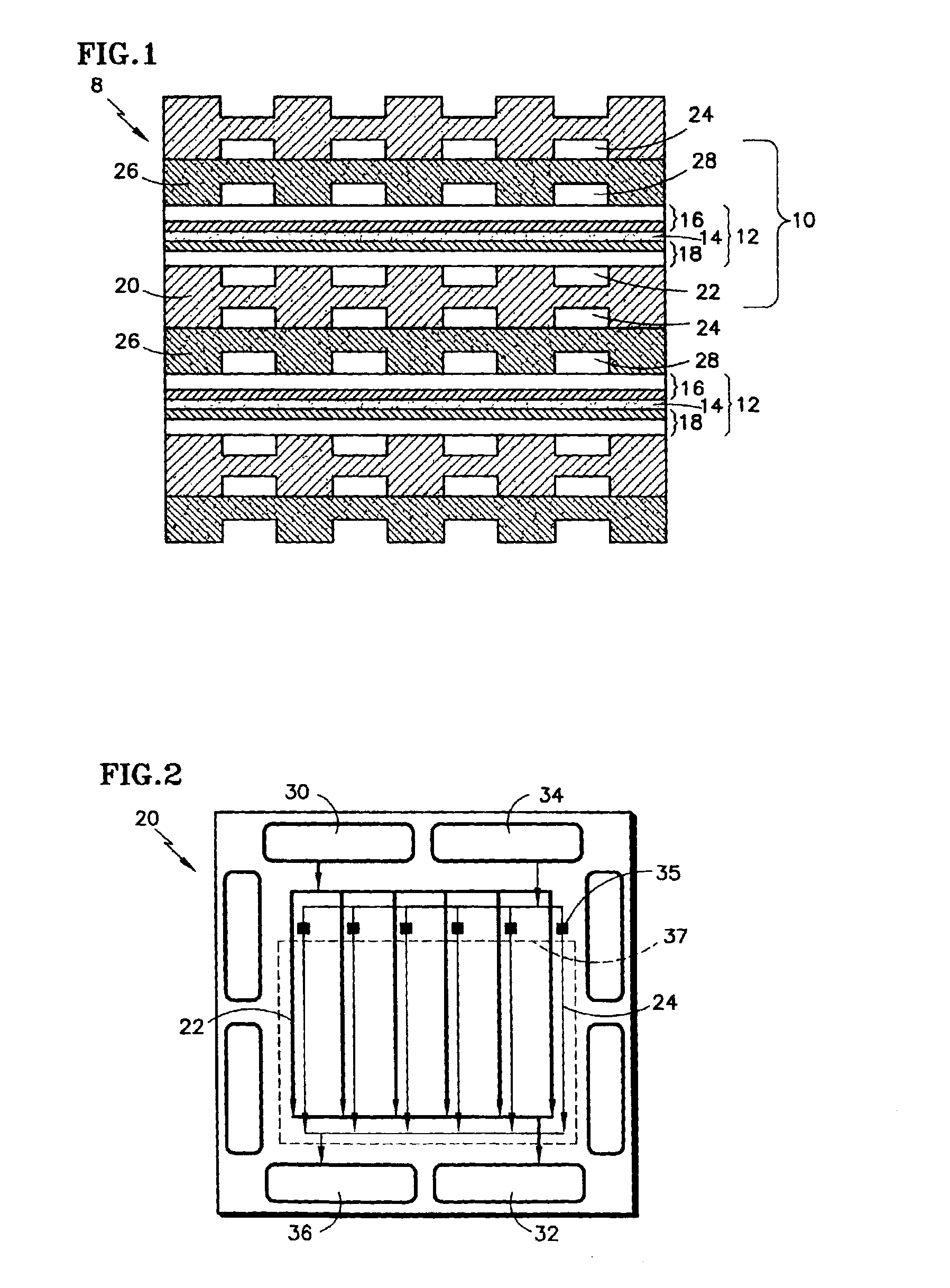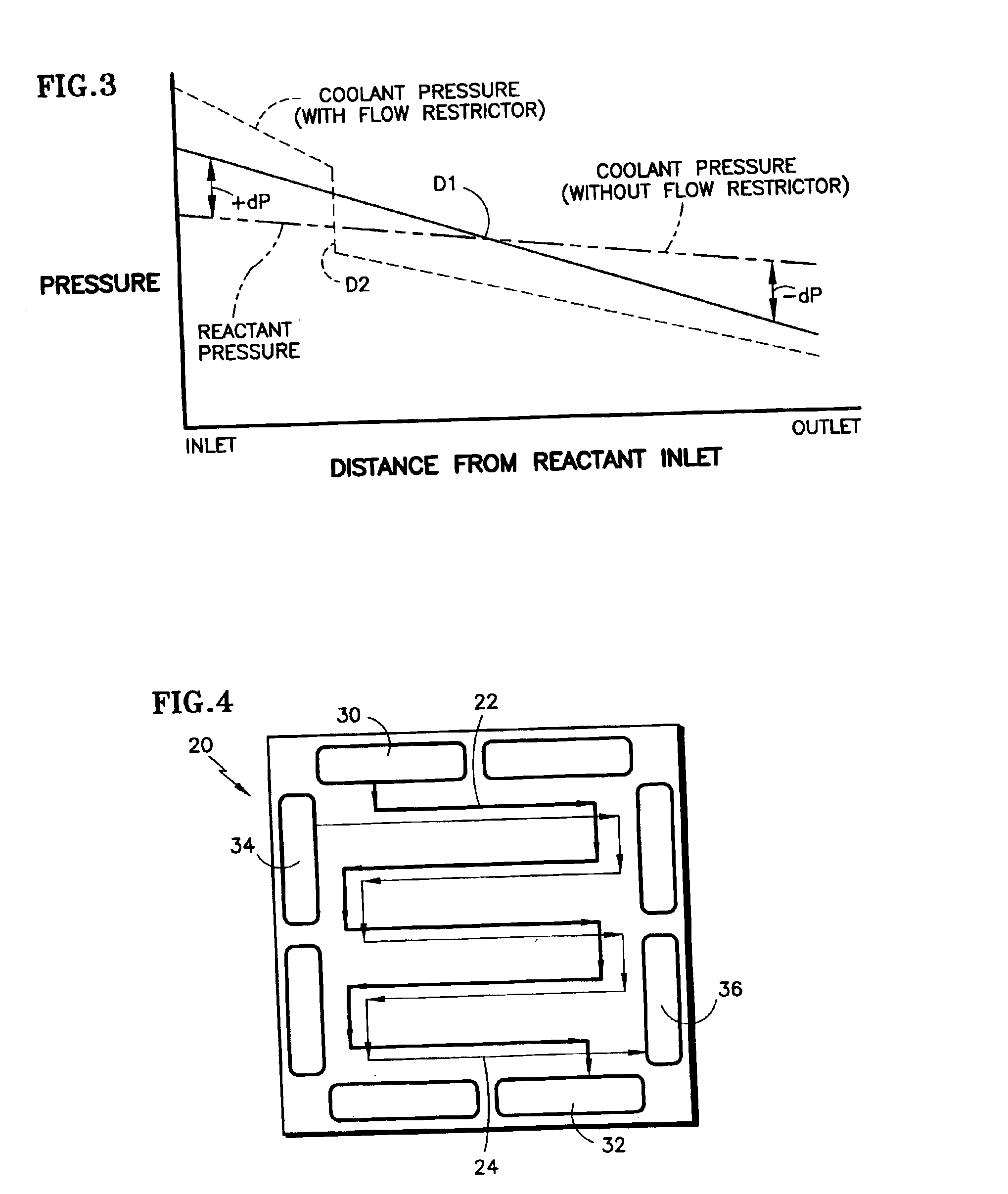Fuel cell system with improved humidification system
- Summary
- Abstract
- Description
- Claims
- Application Information
AI Technical Summary
Benefits of technology
Problems solved by technology
Method used
Image
Examples
Embodiment Construction
FIG. 1 shows a portion of a cell stack assembly (“CSA”) (8) having at least one fuel cell unit (10). The fuel cell unit can have a membrane electrode assembly (“MEA”) (12), a first or cathode side reactant distribution plate (20), and a second or anode side reactant distribution plate (26). The MEA has a proton exchange membrane (“PEM”) (14) between an anode electrode (16) and a cathode electrode (18). The electrodes can be of designs known to those skilled in the art, and may comprise one or more layers of material depending upon the needs of a specific fuel cell design. The first distribution plate (20) can be positioned adjacent the cathode (18), with oxidant flow passages (22) on a surface facing the cathode and coolant flow passages (24) located on the opposite surface of the plate. The second distribution plate (26) is positioned adjacent the anode (16), and can have fuel flow passages (28) on the surface facing the anode. The plate (26) can be made of a conductive, solid or p...
PUM
 Login to View More
Login to View More Abstract
Description
Claims
Application Information
 Login to View More
Login to View More - R&D
- Intellectual Property
- Life Sciences
- Materials
- Tech Scout
- Unparalleled Data Quality
- Higher Quality Content
- 60% Fewer Hallucinations
Browse by: Latest US Patents, China's latest patents, Technical Efficacy Thesaurus, Application Domain, Technology Topic, Popular Technical Reports.
© 2025 PatSnap. All rights reserved.Legal|Privacy policy|Modern Slavery Act Transparency Statement|Sitemap|About US| Contact US: help@patsnap.com



